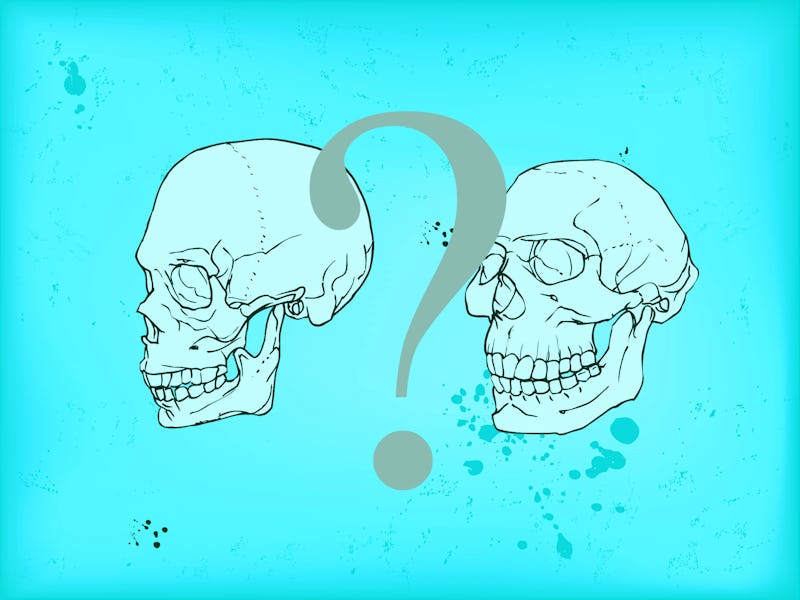“Super-archaics:" Meet the humans who may have mated with your ancestors
These ancient humans were likely the first inhabitants of Eurasia.

Before all other human species died out and Homo sapiens took its place as king of the hominins, Earth was a bit like the Lord of the Rings — a place where different, intelligent, human-like beings roamed around, encountered each other, and fought, loved, and even died together.
Scientists are still working on figuring out exactly how many species of ancient humans have occupied the Earth, and as genetic technology improves, new family members are increasingly being added to the hominin family tree. Time to make room for one more: The "super-archaics."
In a new study, scientists announce the discovery of this new group of ancient humans — and add another plot twist (and a romance!) to our own origin story.
Ancient human history is stuffed with revisions, additions, and differing opinions.
The popular version goes like this: Around 50,000 years ago, (but it could have been much earlier) Homo sapiens left Africa, migrated to Eurasia, met and interbred Neanderthals and Denisovans, and eventually replaced them.
But in the new paper, published Thursday in the journal Science Advances, scientists tell a different version of the story.
In this new tale, a similar process had occurred long before Homo sapiens made their mark.
This version goes like this: Around 700,000 years ago, Neandersovans (the ancestors of Neanderthals and Denisovans) expanded from Africa to Eurasia, met and interbred with a group of ancient humans already there, replaced them, and then separated into their respective subpopulations. We modern humans were relatively late to the party.
The researchers call this group of “indigenous Europeans” the super-archaics — they would have been the first wave of ancient humans to enter Eurasia, around two million years ago.
"Clearing away the brush"
To do the study, the scientists use a tool called Legofit to trace the signal of these ancient human species in DNA. Legofit allows scientists to look farther back into human lineage than previously possible, the study team says.
Essentially, the tool works by "clearing away the brush that obscures the review," study author Alan Rogers, a professor at the University of Utah, tells Inverse.
Legofit ignores the within-population component of genetic variance, which leaves it unaffected by recent history, Rogers says. What is left is a simpler model — one that makes it “easier to study the distant past," he says.
Neanderthal skulls on display.
What it does not do is try to identify specific regions of the genome that came from Super-archaics. Instead, it identifies the “signature” of Super-archaic admixture — in other words, Neandersovan interbreeding with super-archaics — “in the pattern by which mutant and ancestral alleles are shared across populations,” Rogers says.
In the study, the researchers examined genomes in the Simons Genome Diversity Project, representing populations of English, French, and Yoruban people, an African ethnic group that inhabits western Africa. They then applied the same statistical analysis to several archaic genomes — the Altai Neanderthal genome, the Vindija Neanderthal genome, and the Denisovan genome. They also used chimpanzee and gorilla reference genomes as examples of “ancestral alleles.”
Welcome, new relatives
The results point to what may be the earliest known ancient-human interbreeding event — that between the super-archaics and the Neandersovans. These two groups may also be very distantly related, unlike, for example, Neanderthals and Homo sapiens, which were closely related and mated together relatively frequently.
Evidence of this ancient interbreeding can be found in the genes of living people, Rogers says. There are at least two loci (a fixed position on a chromosome) in modern humans that appear to have alleles that originated in super-archaics: A haplotype at the OAS1 locus, which appears in Melanesian populations, and the EPAS1 locus among Tibetan populations.
How these genetic signatures came to exist in living populations is a complex question. When it comes to OAS1, the fact that the haplotype is long indicates that it has only been in the Melanesian populations for about 25,000 years, Rogers says. But it also differs from other OAS1 haplotypes at many nucleotide sites, which indicates that it has been separated from other parts of the human genome for over 2 million years.
When Inverse asked Rogers whether it is possible Homo sapiens ever encountered super-archaics, the short answer is: No idea.
“It is possible that modern humans also interbred with super-archaics, but it is also possible that modern humans got super-archaics' alleles by interbreeding with Denisovans or Neanderthals, who had themselves interbred with super-archaics,” Rogers says.
The new theory may be as controversial as it is complicated.
"It will be interesting to see whether our colleagues find our analysis as convincing as we do," Rogers says.
Ultimately, the study presents a new timeline for the human habitation of Eurasia, and potentially a new member of the family tree — bringing us closer to a deeper understanding of our past.
Abstract: Previous research has shown that modern Eurasians interbred with their Neanderthal and Denisovan predecessors. We show here that hundreds of thousands of years earlier, the ancestors of Neanderthals and Denisovans interbred with their own Eurasian predecessors—members of a “superarchaic” population that separated from other humans about 2 million years ago. The superarchaic population was large, with an effective size between 20 and 50 thousand individuals. We confirm previous findings that (i) Denisovans also interbred with superarchaics, (ii) Neanderthals and Denisovans separated early in the middle Pleistocene, (iii) their ancestors endured a bottleneck of population size, and (iv) the Neanderthal population was large at first but then declined in size. We provide qualified support for the view that (v) Neanderthals interbred with the ancestors of modern humans.